I often joke that real food isn’t just about a green salad. Because I think most people (in America) associate real food (or health or wellness, or any buzz word like that) with kale, green salads, and more kale. But that’s not what real food is all about. I also think most people associate these salads with punishment or some sort of torturous healthy obligation they must fulfill.
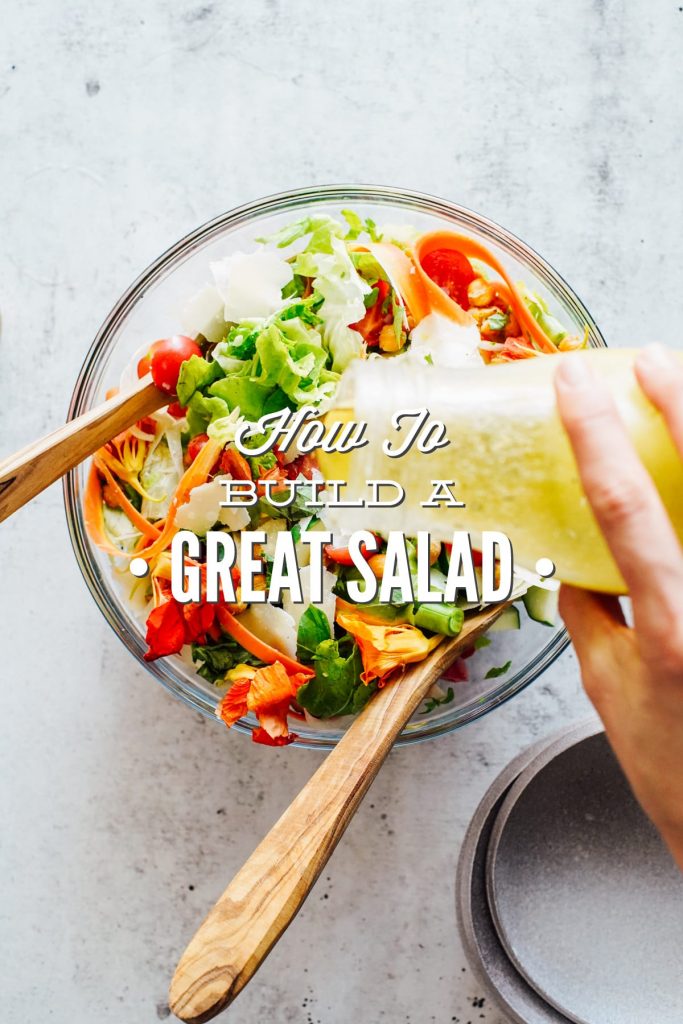
Want to Save This Recipe?
Enter your email & I’ll send it straight to your inbox. And you’ll get new recipes & tips each week.
Friend, I’m here to say that, first of all, real food is about so much more than just salads or kale. We’re not going to dive deep into this chat today, but if you want to learn more about what food is, what food is not, and what real food looks like, I created this blogpost for you.
Second, green salads shouldn’t be boring, gross, a punishment, or consumed out of obligation. A salad should be something that’s incredibly delicious, satisfying, and desirable.
So many salads (too many in my opinion) just aren’t that desirable. Most of the time, they’re made with the same four ingredients: a few super dry shredded carrots, a couple of huge grape tomatoes (how does one fit this large tomato in the mouth, along with lettuce?), and a sea of romaine lettuce leaves. Then, to top if off, salads are usually served with a dressing that’s far from fresh and flavorful.
Maybe you’re reading this and thinking, Man, this girl has an issue with salad.
Or, maybe you’re nodding your head and saying, Yes, girl! What’s up with tasteless and boring green salads?
No matter which camp you’re in right now, I want to show you how to make a green salad that doesn’t taste like crap. In other words (in a language that my mom may be more improving of), let’s talk about how to make an incredible green salad that’s far from bland or boring.
Tips for Making An Incredible Salad
1. Fresh Ingredients Matter
Quality ingredients that are fresh and in-season are going to taste 1000 times better than any veggie or fruit that was picked before its prime and then shipped from halfway across the world. If you’ve been following me over the past year, particularly on Instagram, then you know that I’m a huge advocate for shopping seasonally, particularly from local farms or farmers markets. When you shop local, you’re getting the freshest, most seasonal food. You’re enjoying food that’s essentially grown in your backyard. And this freshness is reflected in the taste.
If you can, get out of the grocery store this season and find a local farmer’s market, farm, or a produce stand. Here are a few ways to find local farms and farmers markets in your area:
- Weston A Price Chapter Leader: There are various “leaders” throughout the country. These leaders are a wealth of knowledge when it comes to finding local food sources in your area. And don’t feel weird about reaching out to a leader–this is their passion and the reason their contact information is listed on the website.
- Localharvest.org: An online database for farms and farmers markets. Find farmer’s markets, farms, and CSA communities (community supported agriculture) in your area.
- Eatwild.com: Another online database for farms and farmers markets, dedicated to helping people find local grass-fed meat, eggs, and dairy.
You can still build an incredible salad without visiting a farm or farmers market. To do this, focus on picking out the freshest ingredients available in the store, and think seasonally. If the romaine doesn’t look crisp and fresh, try using a different green or a mixture of greens, like watercress and butter lettuce. Use a seasonal produce guide when shopping in a grocery store. This will ensure that you’re getting the freshest produce for your salad, which means you’re also buying the most flavorful produce available. This also means you’ll avoid a salad rut, because you’ll be forced to think about using a variety of ingredients versus always reaching for tomatoes and shredded carrots.
2. Avoid Packaged Greens and Veggies
Pre-shredded, pre-chopped veggies and bagged leafy greens (the ones already cut for you) are great to use if you’re limited on time, but if you want the most flavorful salad, think about buying whole ingredients and cutting them yourself. Prep these ingredients in advance, at home, if you want to save time. For example: cut or shred the carrots and radishes and cut the cucumbers.
3. Make your own salad dressing
A salad dressing will make or break a salad. For this reason, I recommend making your own dressing. I know, you’re probably thinking, What?! First a farmers market and now homemade salad dressing?
Hold on, stick with me…
Most store-bought salad dressings are far from simple, real foods. Most are made with preservatives (which is understandable for a product that needs to last many years), hydrogenated oils, and even artificial colors and flavors. Next time you’re in a grocery store, even a place like Whole Foods, pick up a few salad dressing options and read the ingredient lists. It’s an eye-opening experience.
Aside from this, homemade salad dressing just tastes better than anything you’ll find in a store! Homemade dressing, particularly a homemade vinaigrette, is fresh and easy to customize. Once you get the basics down—mixing oil and vinegar with salt—you can customize your dressing. During market season, add fresh herbs to your dressing. In the winter, go with dried herbs from your pantry stock. Want a creamy vinaigrette? Add tahini or mustard. Want more of a honey-mustard vinaigrette? Add honey and mustard to the oil and vinegar or lemon juice base.
Of course, there are other homemade salad dressing options as well. We’ll talk more about dressing options later.
4. Mix Your Greens
We’ll talk more about this later, but it’s worth noting here. I think one of the reasons that people find salad to be boring is because most salads lack flavor and variety. To keep things from getting boring, think about variety, even with the greens you use. Sure, there’s romaine and iceberg lettuce and spring mix, but there’s also green and red leaf, butter and bibb, spinach, and arugula. Choose one leafy green or use a variety.
5. Dry Your Greens Thoroughly
No one wants soggy greens. It’s super important to have dry leafy greens when making a green salad. Why? Because if water is left on the greens, the dressing won’t stick to the greens. The extra water will make your salad dressing taste bland, due to the added water content in your salad. Just say no to wet greens and thoroughly dry them before tossing the greens with the rest of the ingredients and dressing.
6. Use a Variety of Ingredients, Cut in a Variety of Ways
Think about variety in terms of taste and texture. Use fresh fruits, veggies, fresh herbs, nuts, dried fruits, crispy chickpeas or homemade croutons, protein, and/or cheese to add variety to your salad. We’ll talk more about all the variety options later. And think about how to add variety in the way you cut and prepare your ingredients: thinly sliced, shaved, chopped, julienned, left whole, etc.
Helpful Tools for Making An Incredible Green Salad
Before we talk about how to make an incredible salad, it’s important to stop for a minute and talk about a few kitchen tools (besides a knife) that are helpful. Now, these tools aren’t exclusive to making salads. Most of these tools serve multiple purposes.
OXO Produce Keeper
I use these boxes for storing leafy greens. They are the best thing I’ve found for keeping my leafy greens fresh for at least a week, usually two. The boxes uses a coconut-based charcoal filter to absorb the gases let off by produce which in turn causes the produce to rot prematurely. I prefer the medium-size box. I purchased my boxes (I have two) for Amazon. You can also find them at Target.
Salad Spinner
This is one of the most-used tools in my kitchen. I use this tool to soak and clean berries and fruit (or small veggies) and leafy greens. For leafy greens, I prefer to wash my greens just before use, and then use a salad spinner to dry the greens.
If you don’t have a salad spinner (yet), wrap washed greens in a kitchen towel, fold up the corners, and swirl it over your head (like a cowboy with a lasso).
Mandoline
When it comes to veggies and fruits, think about how you can slice, chop, and dice them to create a variety of textures. Using a mandoline to slice veggies and some fruits is a great way to add slightly different textures to your salads.
Veggie Peeler
A veggie peeler is a great tool for, of course, peeling carrots or the skin off cucumbers. But it’s also a fabulous tool to help you make carrot ribbons for a salad, or add thin slices of a hard cheese like: cheddar, parmesan, or asiago.
Storage Jar for Salad Dressing
I don’t want to make a homemade salad dressing every time we enjoy a salad, so I usually make one salad dressing on Sunday afternoon (or for dinner once during the week) and then reuse that salad dressing over and over again throughout the week. I recommend keeping a mason jar around for making and storing homemade dressing. A clean glass jam jar also works well for this.
How to Make An Incredible Green Salad
Now, let’s talk about all the ingredients you can use to make an incredible salad. The only essential ingredient on this list is leafy greens, since we’re making a green salad. From there, you can pick and choose which ingredients you want to add, along with the amount you want to add.
Start with Greens
Think about leafy greens as the base of your green salad. A few options, include:
- romaine lettuce: a sweet leafy green with a slight crunch
- green and red leaf lettuce: a sweet, delicate leafy green
- Boston, butter and bibb lettuce: a slightly sweet leafy green with tender leaves (my favorite leafy green)
- baby spinach: a delicate leafy green with an earthy flavor
- baby kale: a delicate leafy green with an earthy flavor
- arugula: a delicate leafy green with a peppery flavor
- watercress: a delicate leafy green with a hot, peppery flavor
- You can also use mature kale (the kale most of us find in stores), but I recommend sticking with Lacinato kale and always massaging the kale down in a bowl with a few sprinkles of salt before adding other greens and toppings. This salad recipe is the perfect example of how to do this.
Think about using one leafy green, or a variety of greens mixed together. I like to add just a few cups of lettuce and then focus on additional ingredients (like veggies, fruits, nuts or seeds, herbs, etc.). I think one reason many people don’t like salad is because most salads are lettuce heavy, meaning it’s all lettuce and very little toppings. Maybe that’s because toppings are generally seen as “less healthy” thanks to ultra-processed bacon bits and shelf-stable croutons. But that’s not the case when adding real toppings.
Veggies
Veggies are where it’s at when it comes to adding texture to your green salad. Yes, there are tomatoes and cucumbers, which are lovely. But think beyond just these ingredients. Try adding a couple (or a few) different veggies to your salad and think about mixing and matching the texture of the veggies. A few options:
- fennel: thinly sliced (use a mandoline)
- celery: chopped
- carrots: cut into sticks, thinly sliced (use a mandoline), thinly sliced into long ribbons (use a veggie peeler), chopped
- cucumbers: cut into sticks, thinly sliced (use a mandoline), thinly sliced into long ribbons (use a veggie peeler), or chopped
- kohlrabi: thinly sliced (use a mandoline)
- tomatoes: halved or whole grape or cherry tomatoes, or chopped or sliced heirloom tomatoes
- thinly sliced (use a mandoline) or chopped bell pepper or mini sweet peppers
- snap peas: one of my favorite veggies because of the crunch, chopped or thinly sliced
- radishes: thinly sliced (use a mandoline)
- green onions (white and green parts): sliced
- red onions: thinly sliced
Try slicing these veggies in a variety of ways. Use a veggie peeler to create carrot ribbons. And use a mandoline to create thin slices of radishes, cucumbers, kholarbi, and fennel. Try halving grape tomatoes, or leaving them whole.
And think beyond just raw veggies. Try roasting a tray of veggies, like sweet potatoes, butternut squash, white potatoes, beets, carrots, shallots, and/or asparagus. This roasted veggie salad (with steak) is a great example. Or try this vegetarian-friendly roasted veggie salad.
Microgreens, Shoots, Sprouts, or Fresh Herbs
This category of greens should be used in a smaller quantity than the lettuce and other leafy greens mentioned above. This tender and bold group offers a ton of flavor. Think about adding one or multiple chopped fresh herbs, such as:
- mint
- basil
- parsley
- chives
If I have fresh herbs on hand, I usually add up to 1/4 cup of herbs to a large salad. If you don’t have fresh herbs, you can add dried herbs (just a few pinches, such as: oregano, parsley, Italian Seasoning).
Microgreens, sprouts (like sunflower seed sprouts), shoots (like pea shoots), or bitter greens (like sliced endive or radicchio leaves) add variety to a salad. Some of these greens can be bitter or feel more rustic, so a small amount can go a long way. My farmers market also sells edible flowers, which are another fun addition to a green salad.
Fruit
Adding fresh fruit to a green salad can add the perfect amount of subtle, natural sweetness. Think seasonally here, as that’s going to guarantee that you’re getting the tastiest and freshest fruit. Add just one fruit to a green salad, or a couple of fruits. A few options, include:
- pomegranate seeds
- sliced or chopped avocado
- sliced peaches
- chopped or thinly sliced apples (use a mandoline)
- chopped or sliced pears
- berries: strawberries (delicious with roasted beets), blueberries, and raspberries
- sliced mango
Another option is dried fruits, like: cranberries or cherries.
Extra Crunch
Lots of things can be lumped into this broad category. This category includes anything you may want to add to a salad to give it that extra crunch. If you add crunchy veggies to your salad, you may not want to add any extra crunch. But if everything you’ve added is very soft and tender, you may want to add some extra crunch for balance and variety. Here are some extra (non-veggie or fruit) crunch options:
- nuts or seeds: raw or toasted, such as: pumpkin seeds, almonds, walnuts, peanuts, pistachios. (To toast nuts or seeds at home, place them on a sheet pan and bake at 325F for 15-20, until fragrant.)
- hemp seeds
- sesame seeds
- Grains: cooked quinoa, einkorn (yes, the actual grain, not the flour), millet, bulgur, or barley
- crispy chickpeas: this is my go-to option! So good, so crunchy. To make crispy chickpeas, add about 1 1/2 cups of cooked chickpeas to a sheet pan. Toss with a bit of olive oil (a couple of tablespoons). Bake at 400F until crispy. I use chickpeas cooked in my Instant Pot.
- tortilla or corn chips: this is a great topping for a taco salad. Add crushed tortilla chips or corn chips to the top of a salad. I like Siete, Jackson’s Honest, or RW Garica brands.
- homemade croutons
Protein
For a heartier salad that’s more of a complete meal, think about adding a protein. This may look like:
- smoked salmon: found in most grocery stores
- home-cooked salmon: grilled or baked salmon, then shred and add to the salad
- tuna: canned tuna, or even a scoop of tuna salad
- ground beef: for a taco salad
- shredded or sliced chicken: roast up a chicken and use some of the shredded meat in a salad, or cook a couple of chicken breasts and slice
- chopped home-cooked bacon
- hard boiled eggs: halved or sliced. I love to use the Instant Pot to make perfect eggs.
- cheese: my favorite salad addition
Cheese
And now we’ve come to my favorite part of a green salad: cheese.
Now, I’m not talking about a processed cheese product. What I am talking about is real cheese. This means cheese that is produced with real milk or cream through a culturing/fermentation process. Fake cheese is usually labeled as a “cheese product” and has a long ingredient list, such as: cheddar cheese, whey, water, protein concentrate, milk, sodium citrate, calcium phosphate, milkfat, gelatin, salt, sodium phosphate, lactic acid (as a preservative), annatto and paprika extract (for color), enzymes, Vitamin A palmitate, cheese culture, and Vitamin D3.
Real cheese is made with, for example, just: milk, rennet, enzymes, salt.
Real cheese is full of nutrients and it’s easy to digest because of the beneficial enzymes. I recommend purchasing blocks of cheese and crumbling the cheese at home. This will ensure you’re not getting extra, unwanted ingredients that are added to prevent the pre-crumbled cheese from sticking together. When it comes to adding cheese to salad, here are a few suggestions:
- crumbled feta
- shaved (use a veggie peeler) parmesan or asiago
- fresh mozzarella balls, or torn mozzarella from a large ball
- shredded, sliced, or cubed cheddar cheese
- crumbled blue cheese
- goat or sheep’s milk cheese: there are a variety of options in this category
Salt and Pepper
Before we talk about salad dressing, it’s important to mention salt and pepper. I highly recommend adding a couple of pinches of salt and pepper to your salad before dressing. I like to use a mineral-rich salt, like Redmond Real Salt, so it’s not just a flavor enhancement but also a great source of minerals. I find this enhances the overall flavor of the salad.
Salad Dressing
Now we’ve come to the end of our salad making, so it’s time for the dressing. And you already know my advice: make your own dressing. I’m not suggesting that you make anything complicated. Keep it simple. Here are a few suggestions for homemade dressing:
You don’t have to dress the salad before serving, but it will ensure the best flavor since all the ingredients will be evenly coated with the dressing. Never overdress a salad with dressing. Add a bit, toss with your hands and then add more, if needed.
Adding a dressing isn’t just fun and flavorful, it’s also very beneficial for the body and digestion. The fat and acid found in salad dressing, like a homemade vinaigrette, actually help you better digest all the raw veggies in the salad.
The Green Salad Recipe Formula
Okay, that title is a bit of a trick, because there’s no recipe or formula needed. That’s why I don’t share many salad recipes on the blog. My salads are always changing. I never stick with one single recipe. They change with the seasons, based on what’s available at the market or store.
There’s no right or wrong way to make a salad. The key is to experiment and don’t be shy. Start with a leafy green base (some sort of lettuce or leafy green suggested above). The greens will have a larger ratio, generally, than any other topping you choose to add.
From there, add a variety of ingredients, like: veggies, fruits, nuts or seeds, cheese, etc. You can choose just one topping for a super simple salad, two toppings, or a ton of different toppings. When you build a salad, think about ingredients and textures that balance each other out. For example: delicate greens with some thinly sliced, crunchy veggies for delicate crunch and a small amount of fresh herbs or dried herbs. Then, finally, top off the salad with a homemade dressing of your choice.
As you begin creating salads, using a variety of ingredients, you’ll find combos and flavors you love. The key is to be adventorous and experiment.
That said, I’m going to share some green salad recipes below, just to give you a starting point. But, remember, the heart and soul of today’s chat is to provide you with a guide so you can think outside the box and begin creating your favorite green salads.
Green Salad Recipes to Try
- Easy Weeknight Salad
- Kale and Romain Caesar Salad with Homemade Croutons
- The Easiest Ever Side Salads You Need to Memorize ASAP
- Mega Crunchy Romaine Salad with Quinoa
- Greek Wedge Salad
- Thai Mango Salad with Peanut Dressing
- Favorite Green Salad with Apples, Cranberries, and Pepitas (Pumpkin Seeds)
- Beet Salad Balsamic Mustard Dressing
- Warm Autumn Spinach Salad
- Spinach Berry Salad
How to Store Fresh Salad Ingredients
Want to see how I store the fresh ingredients used to make salads and multiple other meals? In this video, I share all my tricks! After watching the video, head over to this post on the blog where I share in detail about my storage containers and methods.


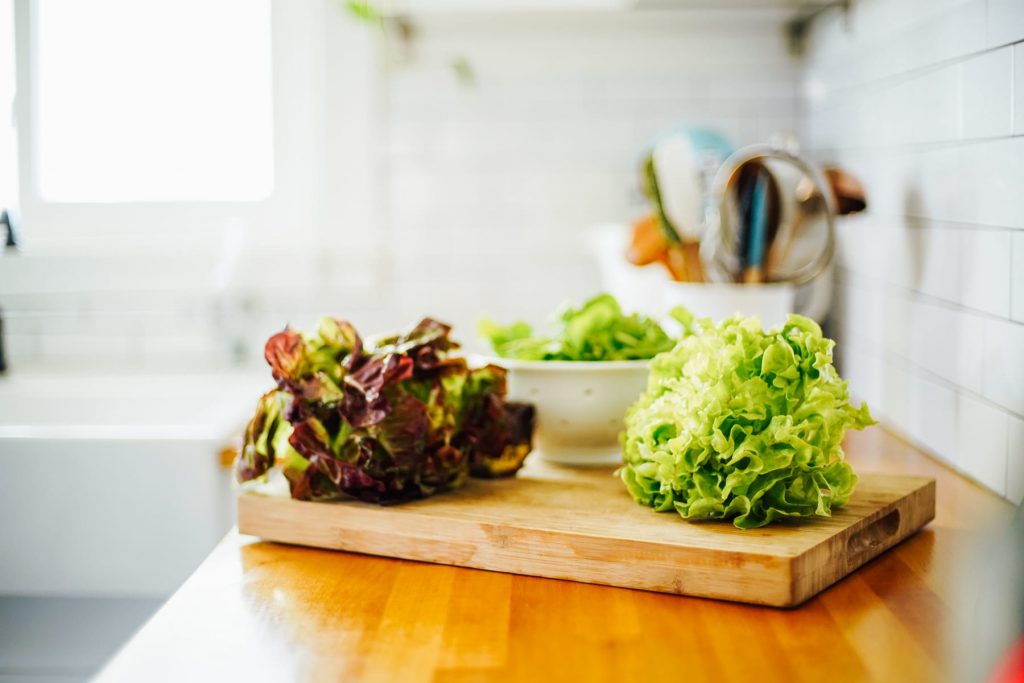
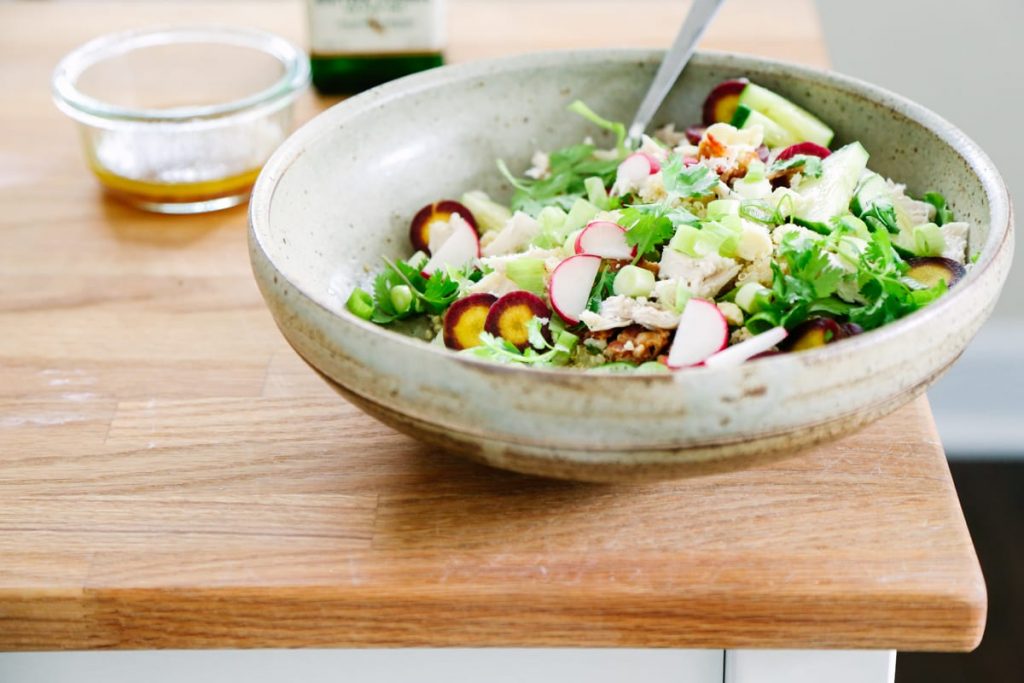
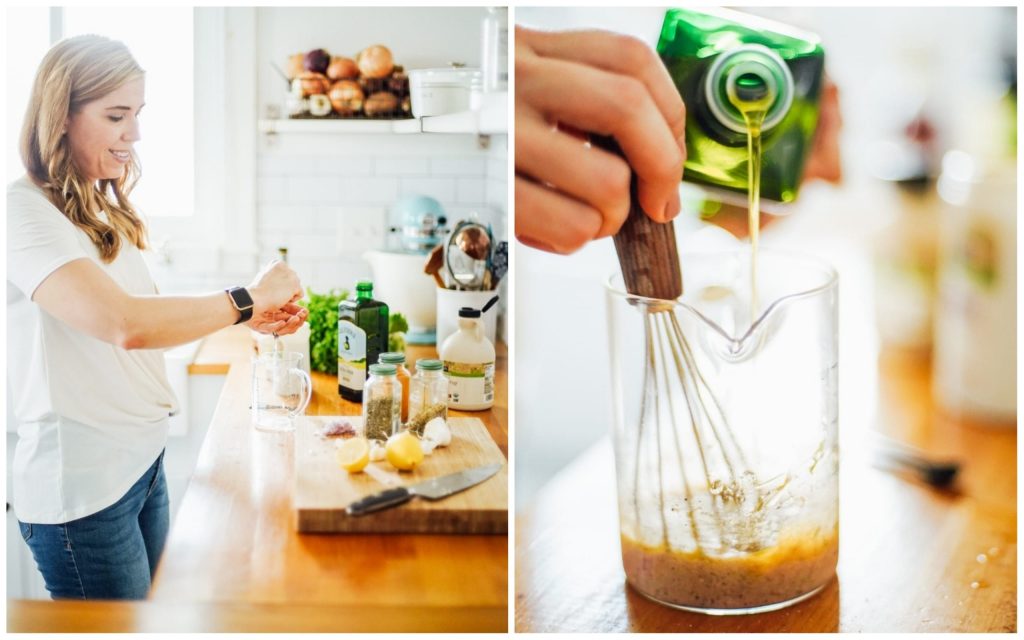
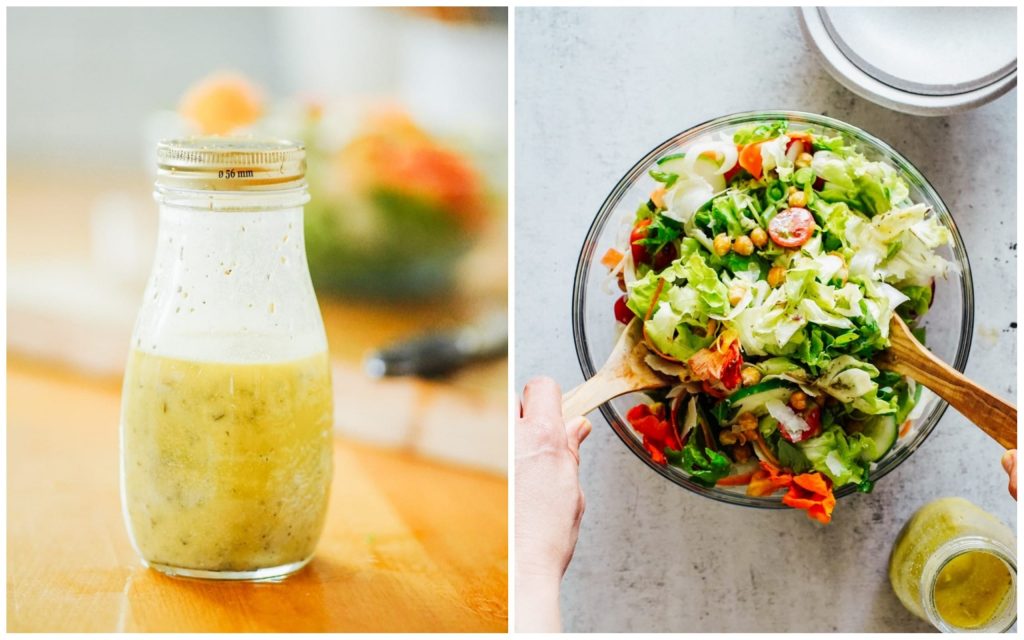
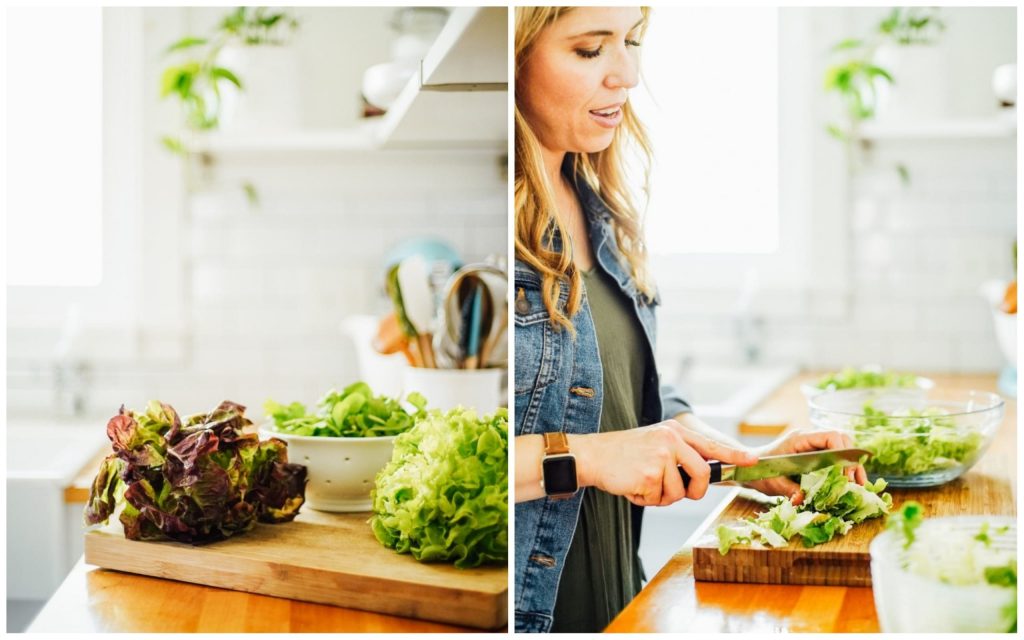
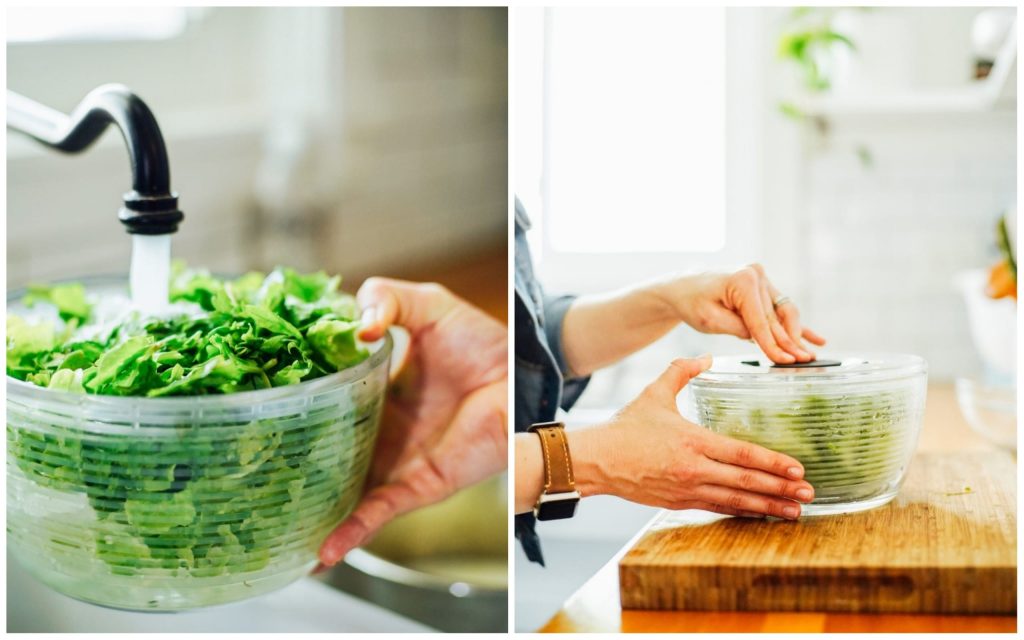
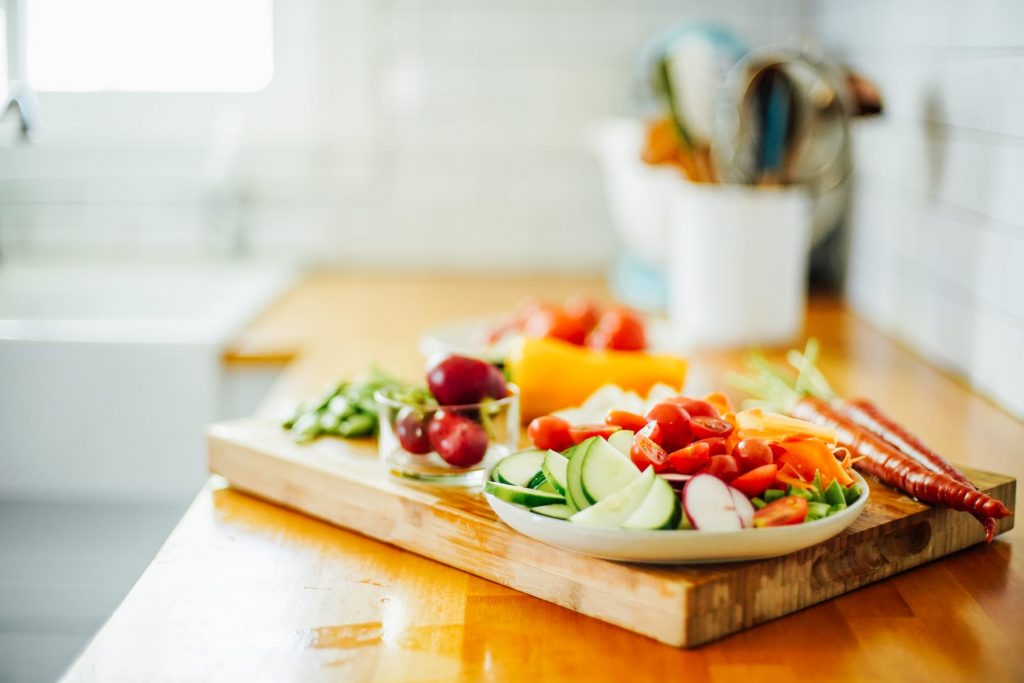
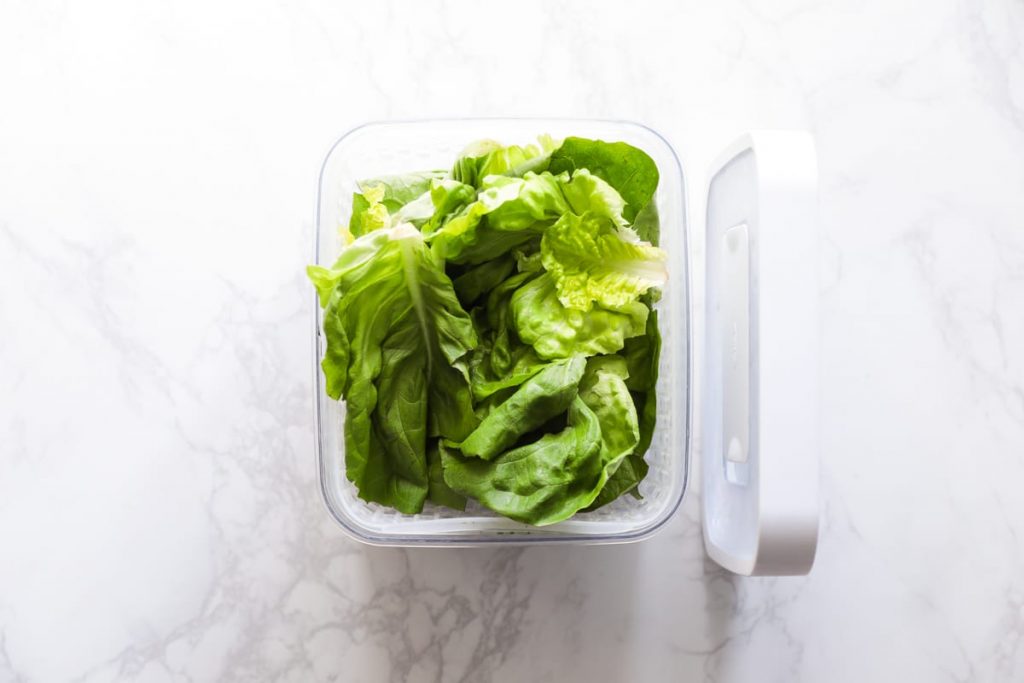
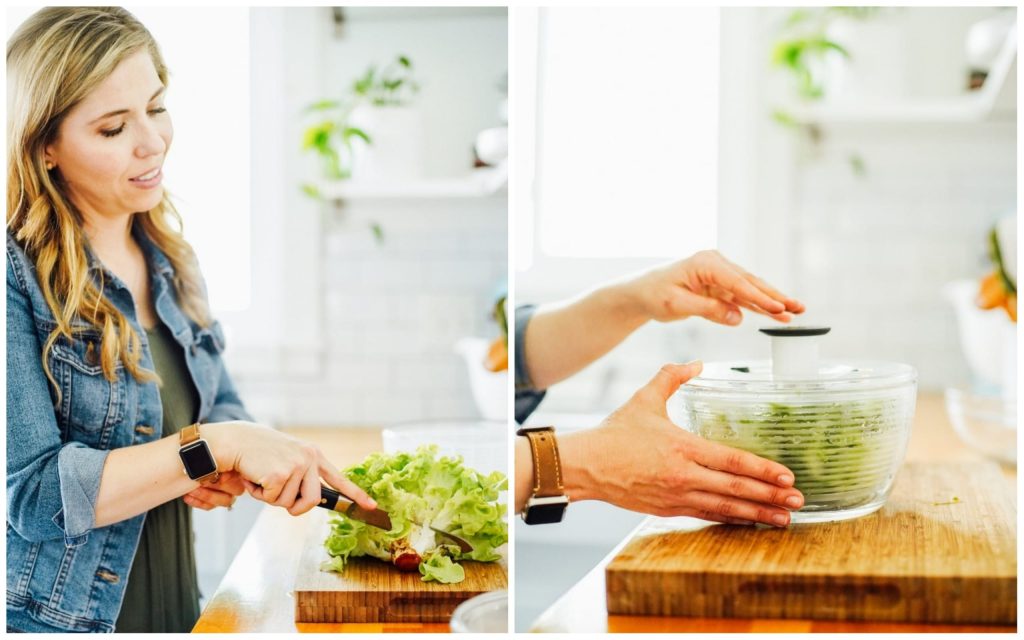
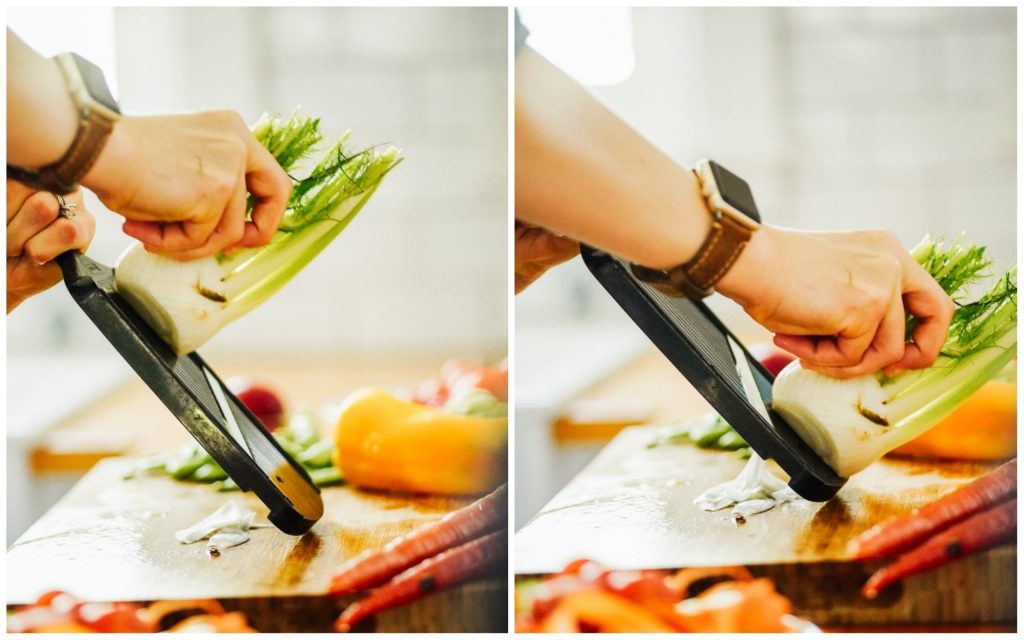
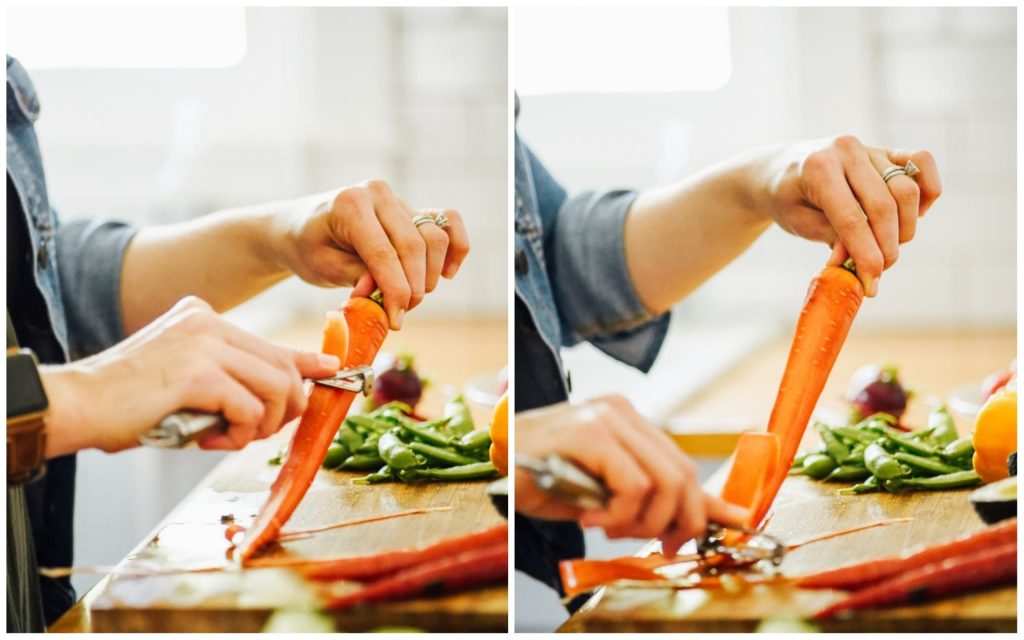

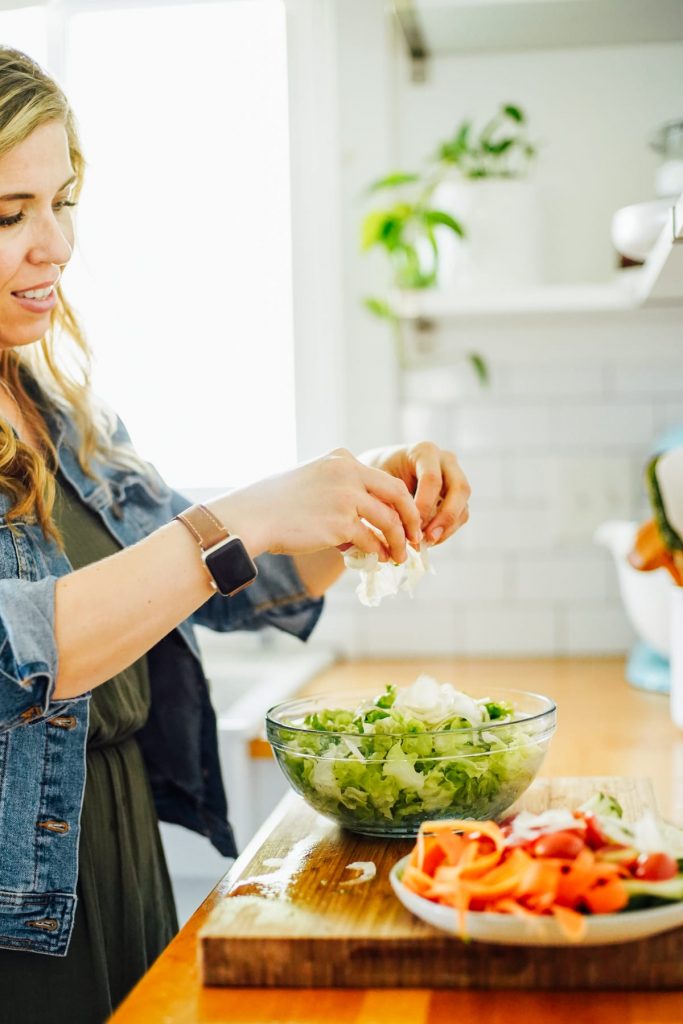

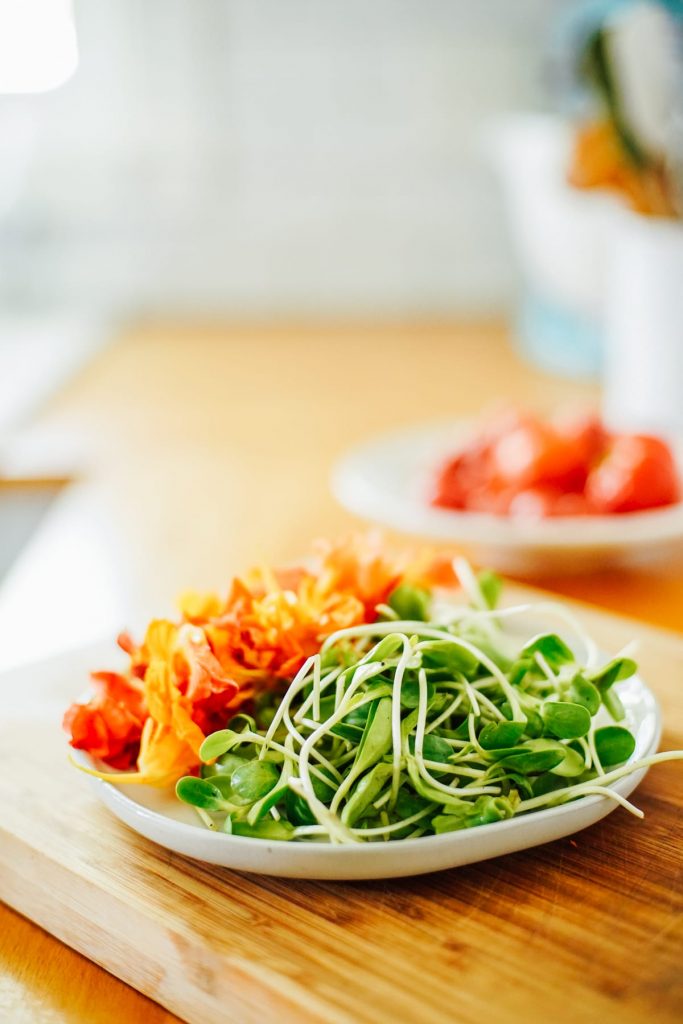
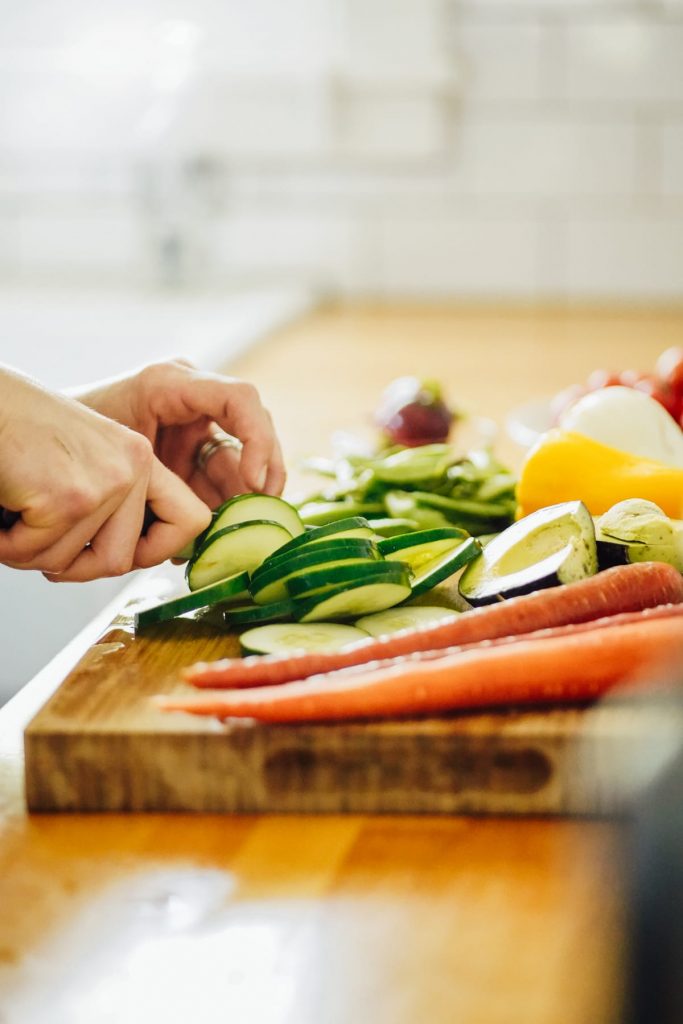
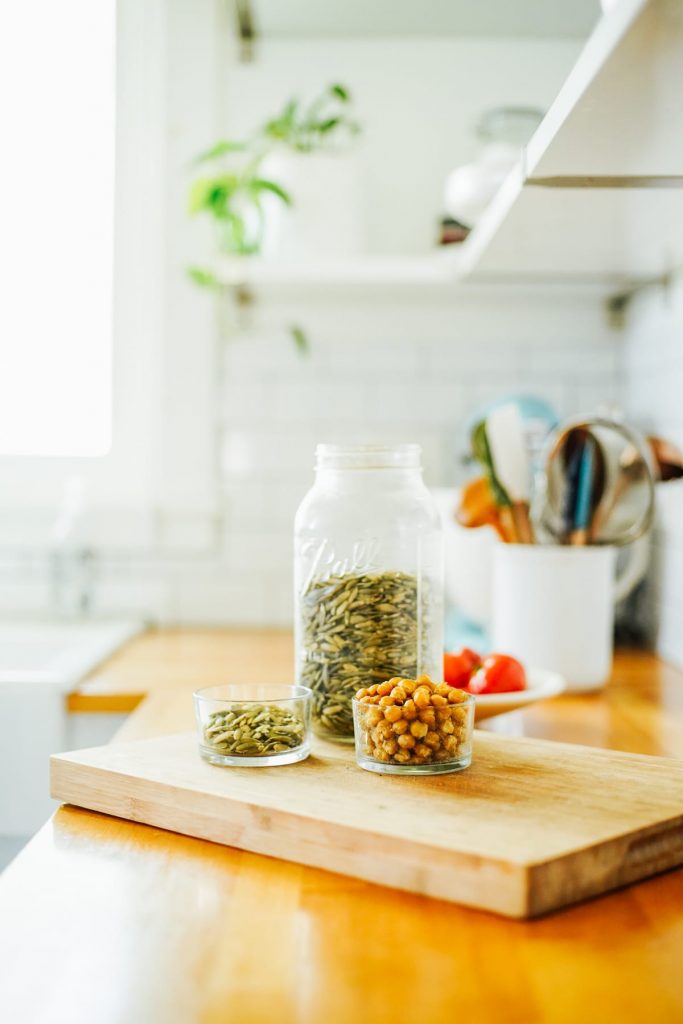
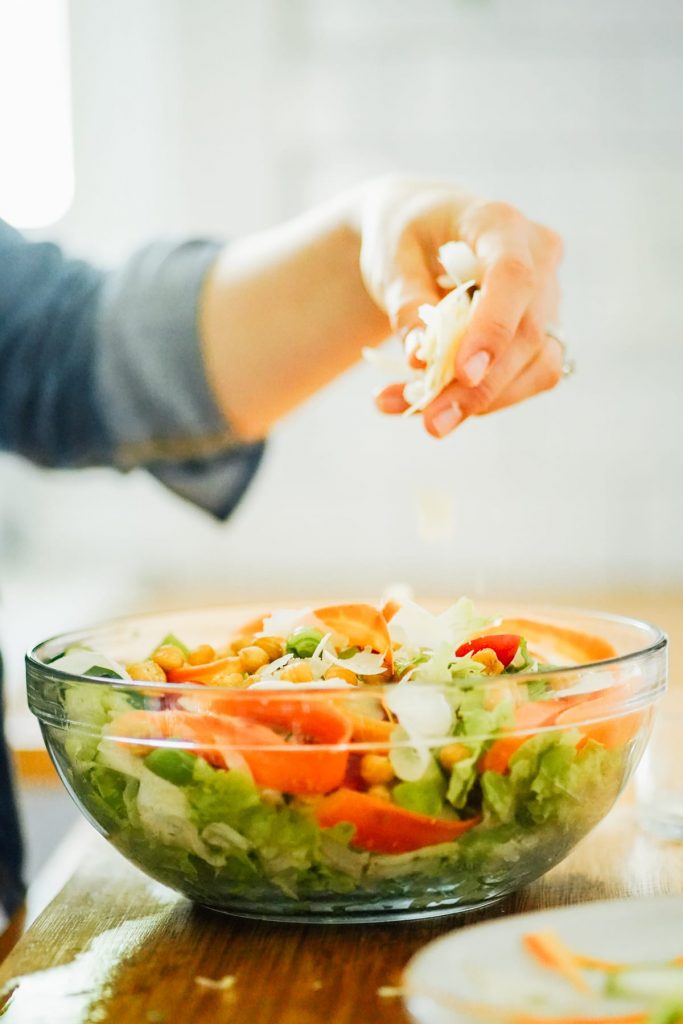
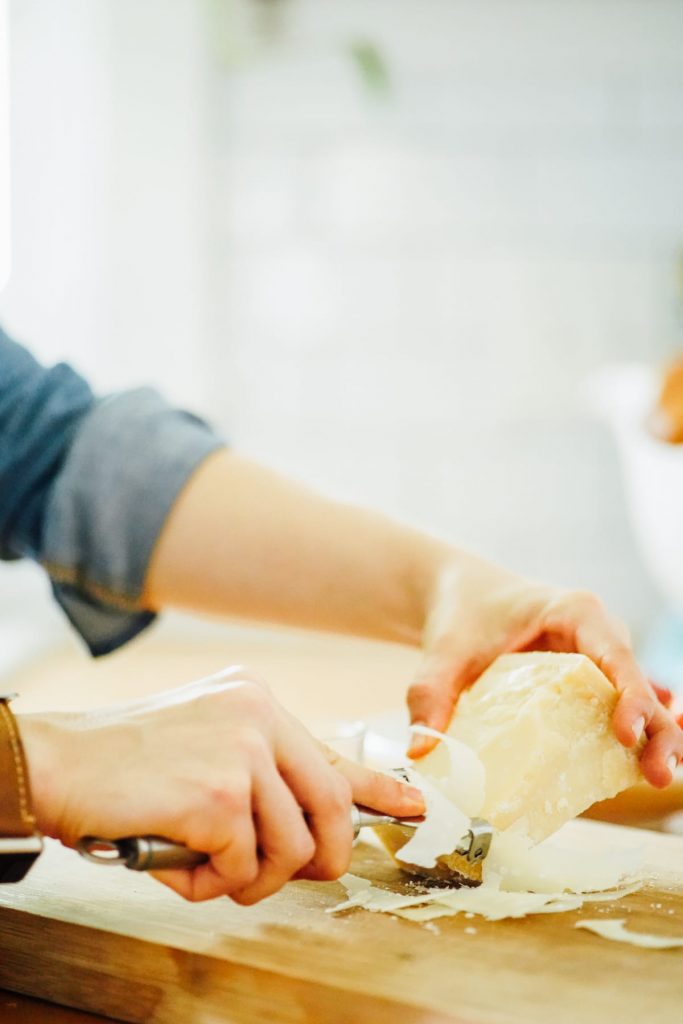
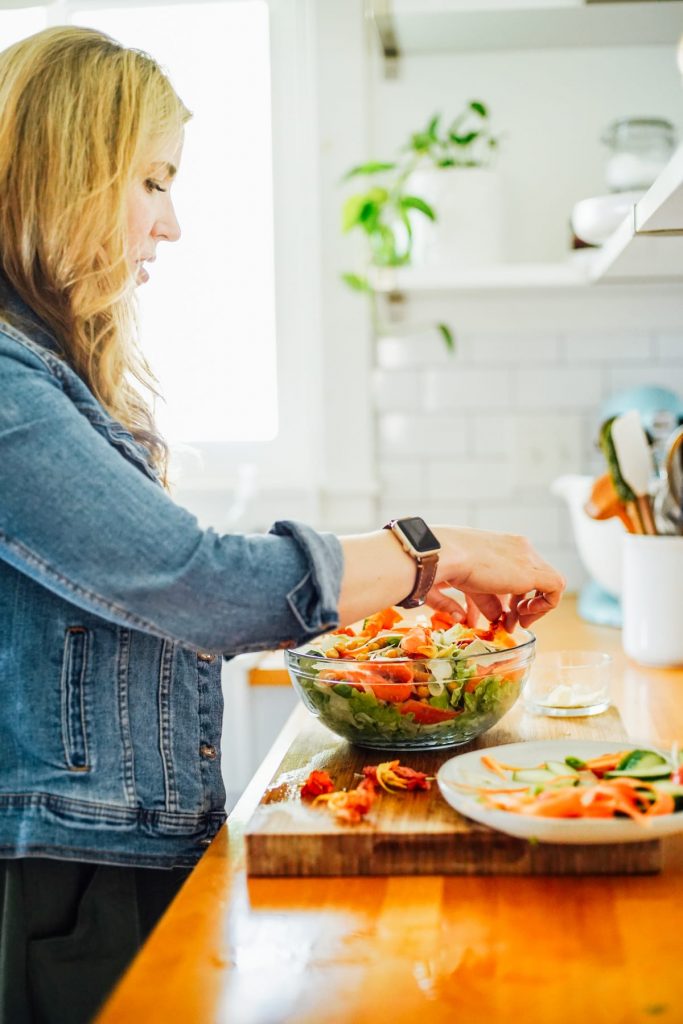
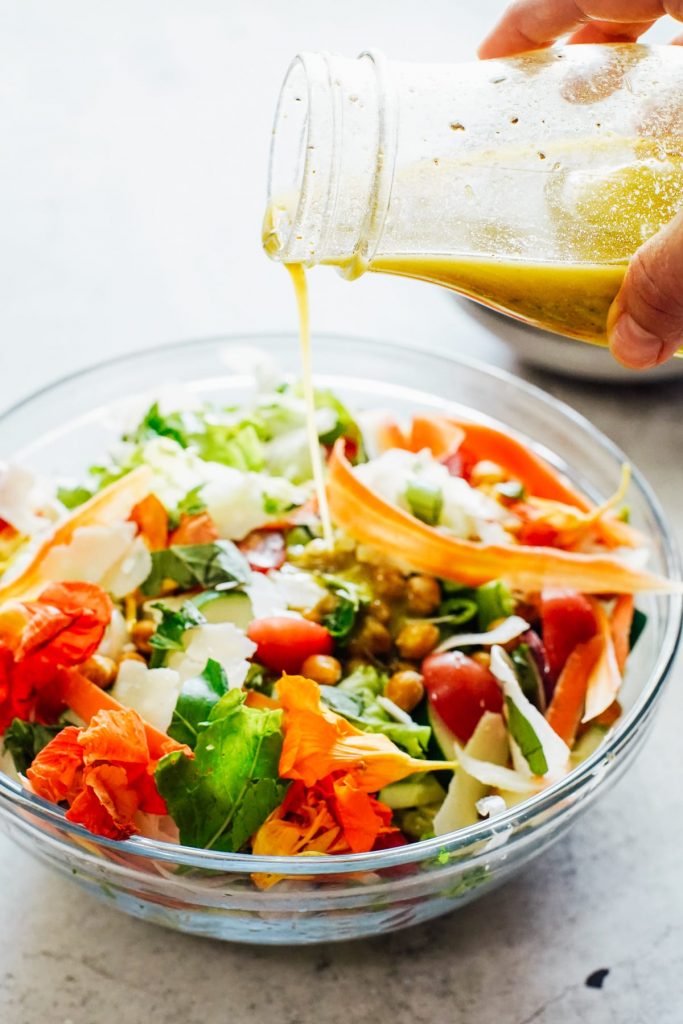
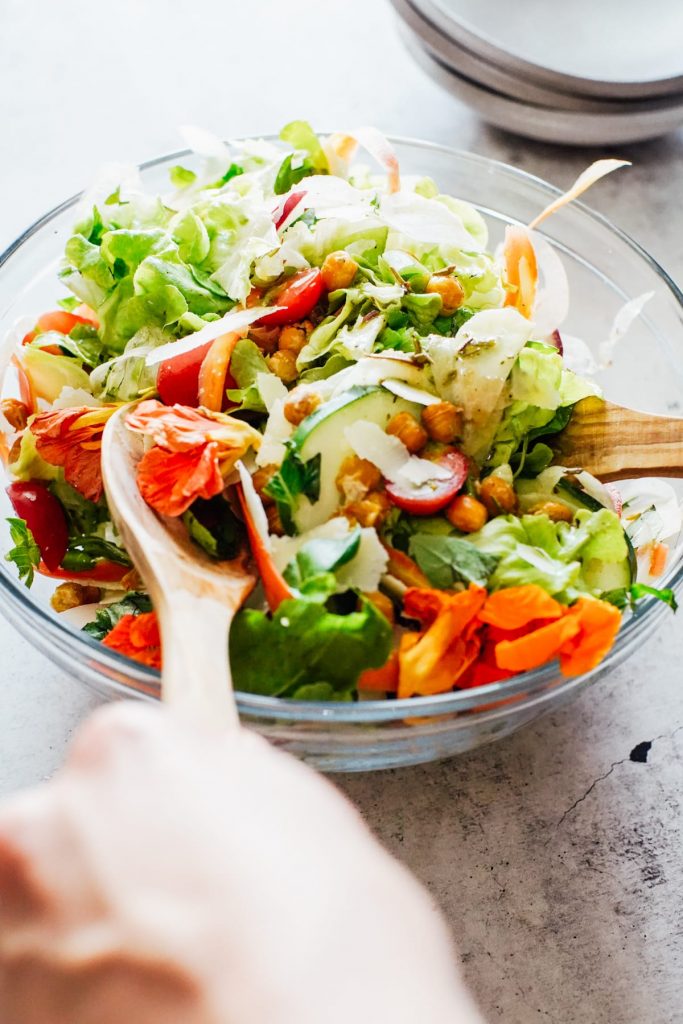
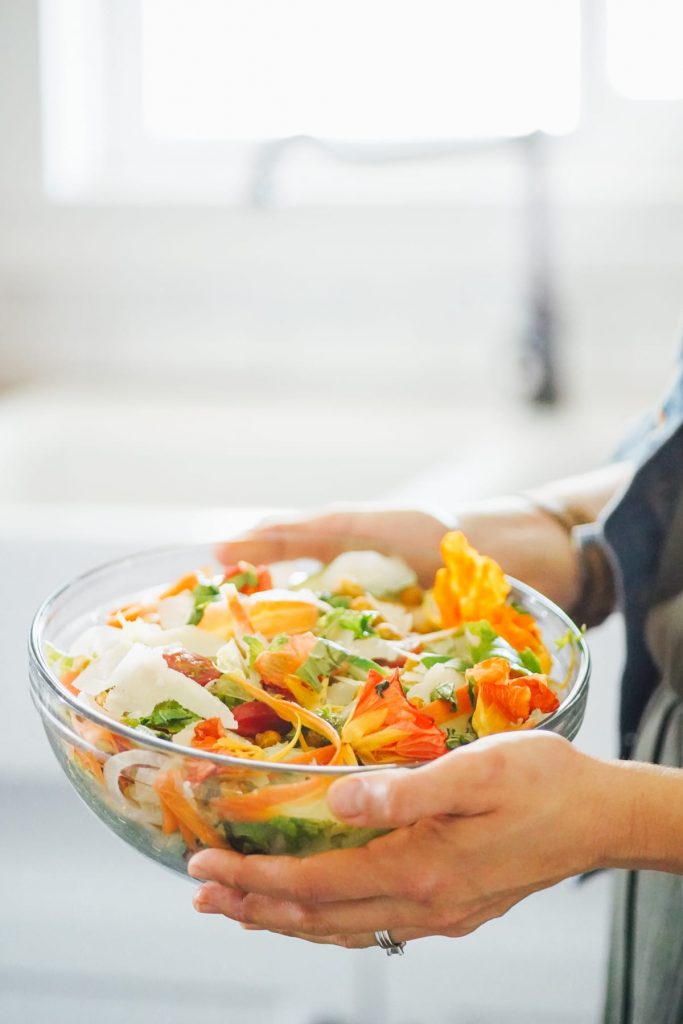
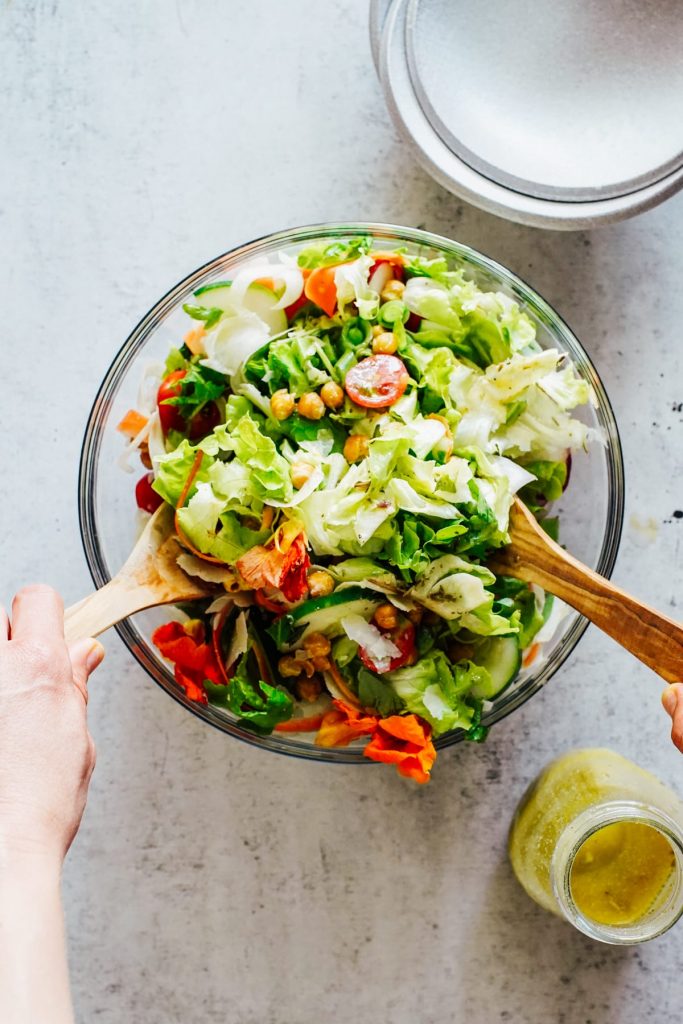
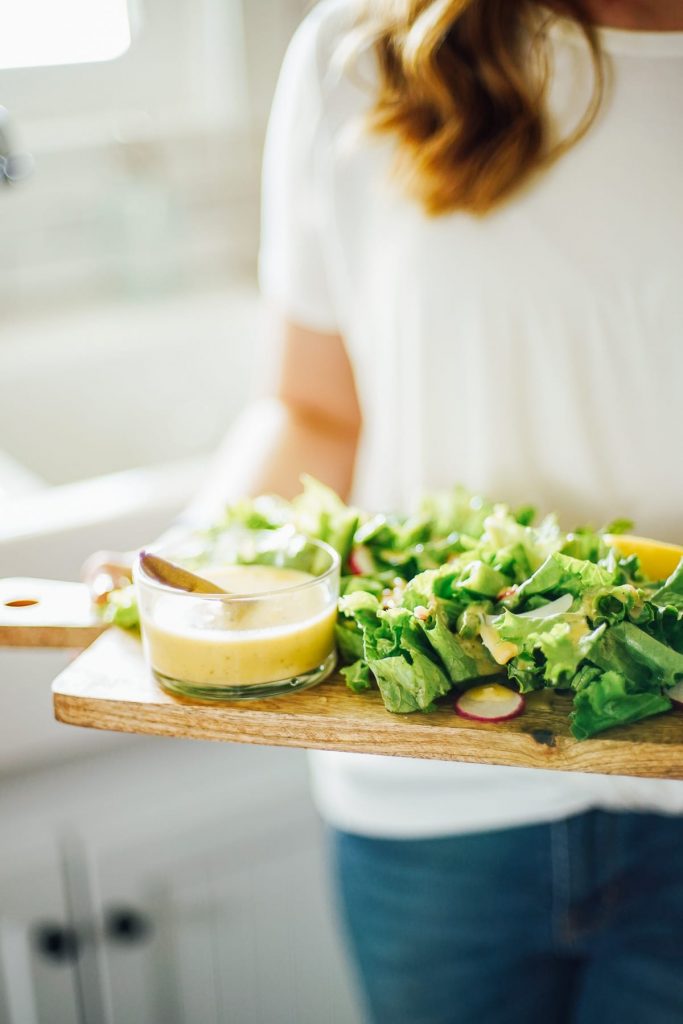
Love your salad tutorial. The ideas for different greens, cheese, protein etc is a wonderful reminder. Would love to print out all the hints but can’t seem to find a way. Would be a good reference to go back to when you hit that oh no not another boring salad. Love you website. You’ve changed my families lives.
Thank you so much, Jannette! Love the idea of a printable–going to add this to my list to create soon. For now, you could probably copy and paste each ingredient section and put in a word doc?